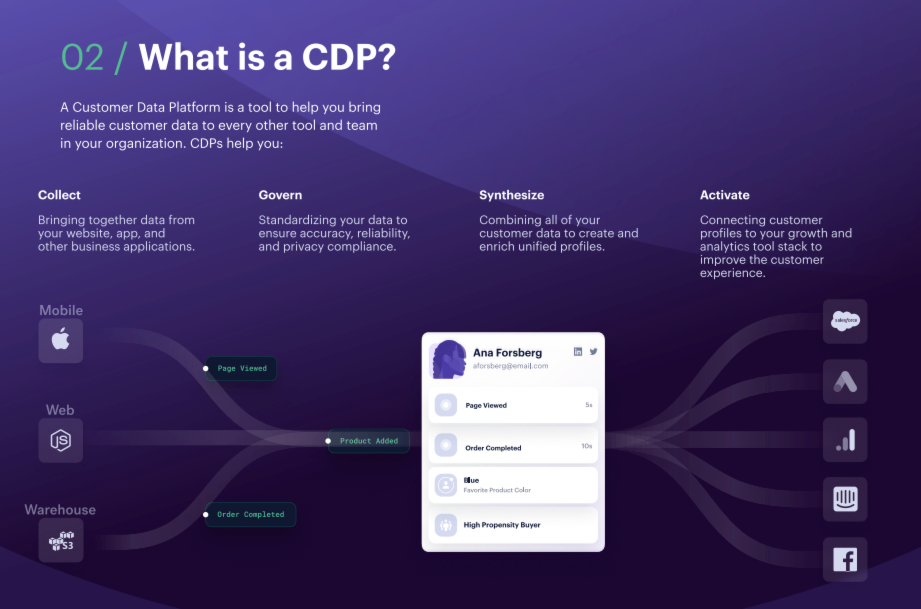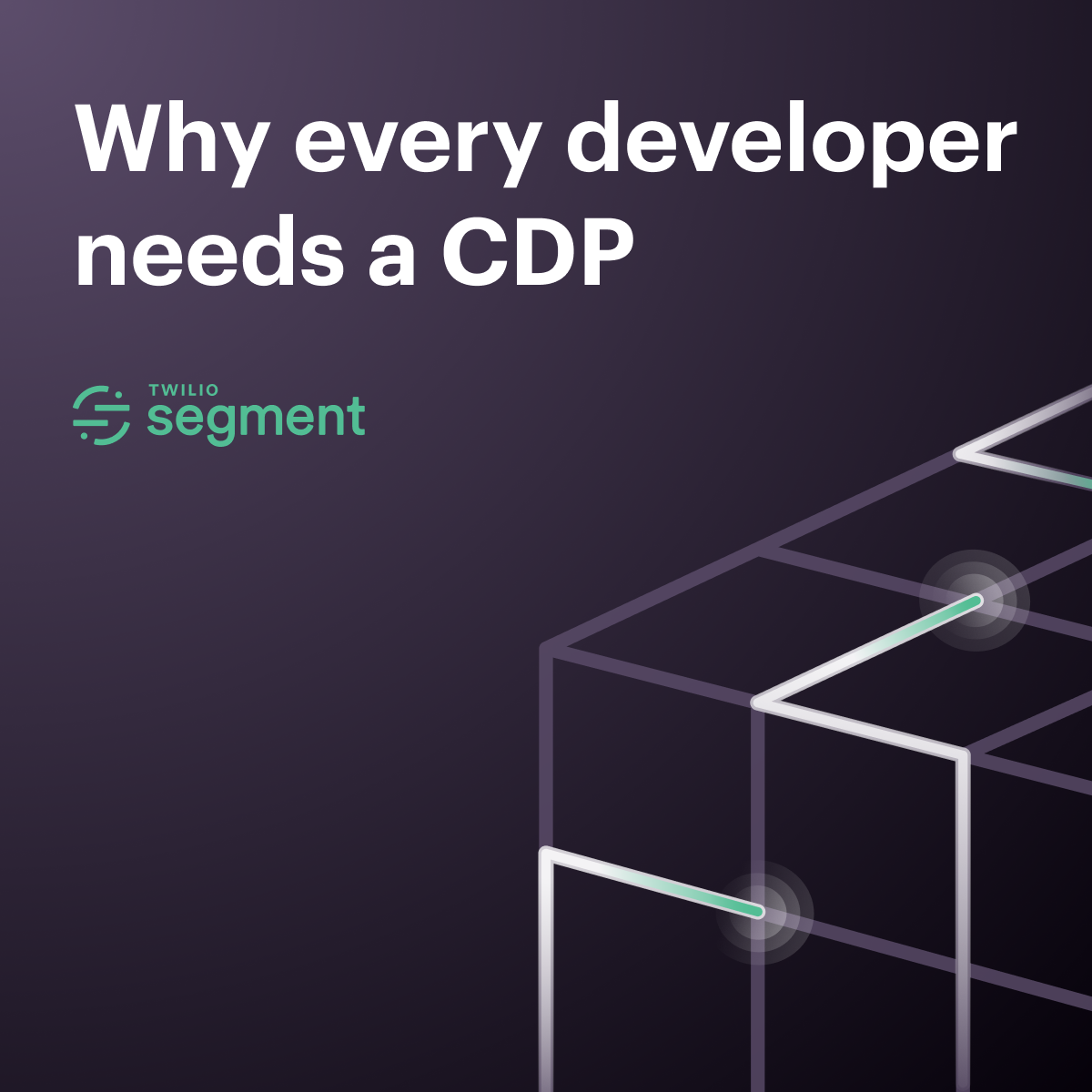Enter the CDP. A full-fledged CDP helps a company perform the following customer data tasks:
-
Collect customer data from every source, using APIs for processing, consolidating that data in a single place.
-
Govern the data that arrives, preparing it for synthesis. This may include validation for correctness or sanitization for privacy concerns.
-
Synthesize the data to build customer profiles and audience segments while surfacing insights about customer trends and behaviors.
-
Activate that data by connecting insights to tools for more targeted customer engagement, fine-tuning advertising campaigns, or building machine learning models for predictive behavior.
Twilio Segment is a CDP that provides integrations and an API to connect to your data sources—for data collection and your destinations—for data activation. By providing businesses with integrations to hundreds of data sources and destinations, Segment frees up the engineering resources of a business to focus on delivering critical business value.
Let’s consider the key features of Twilio Segment and the benefits of using Segment.
First, Twilio Segment unifies all of your connections into a single API, simplifying the process of connecting to data sources and destinations. Customer data can come from hundreds of different sources related to analytics, advertising, email campaigns, A/B testing, and more. The integrations with each of these sources have already been built into Segment.
In most cases, connecting a new data source simply means inserting a JavaScript code snippet or a call to the Segment SDK. Immediately, customer data from these sources will funnel to Segment.
By solving the integration problem, Segment does the heavy lifting of data management, giving valuable time back to your engineers.
Segment also consolidates, cleans, and organizes your incoming customer data. By configuring data specifications that outline the shape of the data you expect to arrive, you can configure Segment to handle data that doesn’t fit that shape. That might mean flagging the bad data for review while allowing the good data to continue to sanitization for data privacy concerns or regulations.
With all of your customer data unified into a single view of the customer, Segment builds a profile based on the customer journey. Segment organizes and analyzes the data, providing dashboard visualizations so that marketing teams can build out customer segments based on these customer behavior insights.
Segment integrates tightly with Twilio’s communication platform. This is the game-changing benefit of Twilio Segment: connecting your customer insights with your customer communication. By integrating seamlessly with a suite of developer APIs and tools from Twilio, Segment allows you to reach customers on their preferred communication channel: email, voice, video, or messaging.
Lastly, Segment helps you activate your data further by supporting data warehouses (such as BigQuery, Snowflake, or Redshift) as destinations. Customer data can be sent to data warehouses for querying or leveraging within machine learning applications for further insights. This is exactly what Norrøna, a leading brand of outdoor clothing in Scandinavia, did when it used Segment as the connector to build its product recommendation engine.
Segment does the heavy lifting of collecting and processing data from omnichannel customer interactions. As Segment separates the task of data collection from data analysis, engineering resources aren’t misappropriated for building integrations. Instead, connecting to data sources or destinations is accomplished seamlessly through a single API.
Segment facilitates the deep analysis work, providing dashboards and visualizations that help teams to understand customer profiles and segments. By connecting these insights to destinations, including Twilio’s extensive customer communication platform, Segment empowers businesses to capitalize on the wealth of customer data.
For a deeper dive into Twilio Segment, download the whitepaper now.

